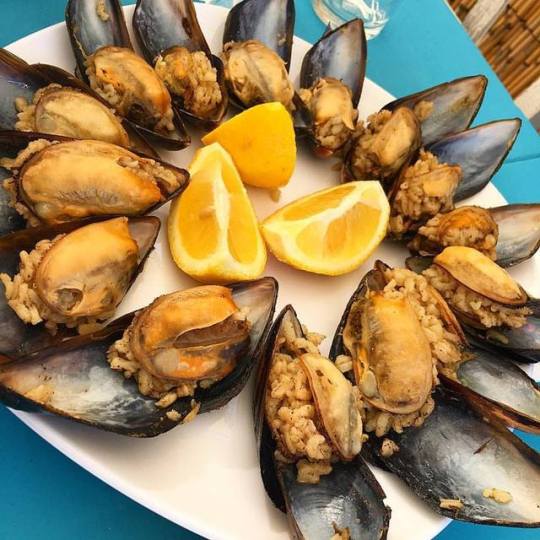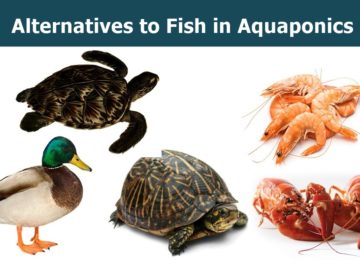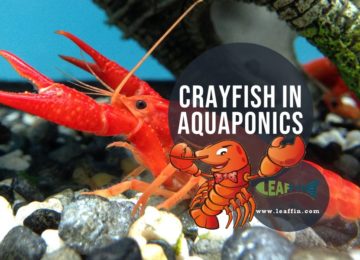The mussel is a type of saltwater or freshwater mollusk. This small selfish is now very popular, relatively abundant and fairly cheap.
They have a lot of benefits. Surely, there is a lot of potentials to experiment them with aquaponics by integrating them into the cycle. It will enable the farmer to reap even more benefits. Here is a list of benefit you can get from mussels.
Table of Contents
1. Natural Filter
Whenever you change or add media in your aquaponics setup, it takes some dirt with it. Also, over the time water in your system get dirty and accumulates algae. The problem is that bio-filter (bacteria + Plants) does not process and absorb the dirt and algae. So, you may also opt to set up a filtration system or sponge filter to tackle this issue. Or maybe wait for the dirt to settle down.
Mussels are natural filter feeders and can improve water quality by filtering suspended pollutants and particles from the water column. Some mussels can strain up to 50 gallons of water in a single day (this depends on mussel size and other factors). This also prevents oxygen depletion in a natural way and improve the water quality for other animals.
There are efforts going on to re-establish the declining freshwater mussel populations so they can use their natural filtration abilities to clean up pollution in waterways. Read more here
Check this video out for the potential of mussel filtering the water.
2. Algae Control
When algae can accumulate in aquaponics systems because of various reasons. They are dangerous on long-term as they cause diurnal pH swings, nitrite poisoning and can deplete dissolved oxygen (DO) in the water. Many ponds also get accumulated with full of algae, which typically is fought with chemical agents or animal sewage with UV filters. A cheaper and more sustainable way to clean the pond, on the other hand, would be to use mussels.
Freshwater mussels can purify the water in a natural and eco-friendly way by feeding on microalgae. The mussels suck water in and out, while micro-algae is filtered out.
3. Mussels Shells
The mussel shells are made up of three different layers. The inner side of the shell is lined with mother of pearl. The tough, prismatic calcium carbonate crystals made up the middle portion of the shell wall. The outside, dark-colored part of the shell is called the periostracum, which seals the other shell layers.
Shells are used to make buttons. Choctaw ancestors used to add burned shell flakes to their clay for pottery. The pots created from the burned shell/clay mixture were less prone to break or bend during drying and firing.
4. As a Food For Eating

After the mussels have cleaned your water, you can eat them, use for animal feed or biogas and use their shells. You may start enjoying mussels and consider adding them to your diet after looking at its health benefit. Mussels contain 20.23 grams of protein and supply 146 calories per 3-ounce serving. They contain mostly heart-healthy unsaturated fats making them a nutritious addition to your diet.
Let’s take a detailed look at its composition.
Protein: Each 1-cup serving of mussels contains almost 18 grams of protein.
Selenium: Eating 1 cup of mussels boosts your selenium intake by 67.2 micrograms.
Zinc: A 3-ounce serving of Mussels supply 2 milligrams of zinc. You need 8-11 milligrams of zinc on a daily basis.
Vitamin A: Each 1-cup serving of mussels contains 240 international units of vitamin A, providing 8-10 percent of the recommended daily intake for the human.
Vitamin B12: Mussels supply 17.5 micrograms of vitamin B12 in each 3-ounce serving.
Iron: A 3-ounce serving of mussels supplies 5.71 milligrams of iron. This is a significant portion of the 8-17 milligrams of iron human requires on a daily basis.
Precautions To Be Taken
- Mussels are prone to bacterial contamination like other seafood.
- Avoid dead mussels as they deteriorate very quickly.
- Poisonous algae often accumulates on the mussels that make them unfit for consumption. Eating such mussels can cause paralytic shellfish poisoning.
- Soak the mussels in fresh water for 20 minutes to remove sand.
- Use a firm brush to remove the remaining sand and other debris.
- Rinse them under cool tap water and wipe them with a towel before cooking.
5. Pearls
You can get some beautiful pearls out of mussels. The Asian saltwater pearl oysters are currently harvested for the cultured pearl. For this purpose, the beads of grounded shells are placed inside the mussels to assist in the pearl formation. The oyster’s mantle secretes thin layers of mother of pearl upon the beads, resulting in a cultured pearl. These pearls are left inside the oyster from one to several years before they are removed to be sold.
Concerns & Conclusion
During the life cycle of the mussel, at glochidia phase, it attaches and matures into a microscopic fully formed juvenile mussel. After which it will release itself from the fish and in its natural habitat fall to the river bed.
But in an AP environment they will likely propagate the entire system, and while they will filter all the things you don’t want in an AP system, they will also consume the beneficial bacteria that are facilitated to establish during system cycling to convert the Ammonia and Nitrites to Nitrates.
Plan accordingly to mitigate the risk of destabilizing the balance. You’ll need to monitor frequently and finely tune over time with an entity you may potentially have little or no control over.
Some ponds systems rely on algae to support the zooplankton and insects, which are food for the fish. However, their ability to filter out the algae sometimes reduces the growth of fish by breaking the food chain.
Mussels find it difficult to survive in small ponds or tanks over a longer period. They start dying of hunger after purifying. They can filter one liter of water per hour, and spend about 80% of their time feeding. So one mussel would filter the entire volume of the average aquarium in a few days. Even if you keep only mussels and grow green water to feed them, it is challenging to grow enough food for them to maintain their weight.
However, we recommend that you use mussels in your system occasionally to get the benefits. They are not good in the long term. Just use them in short-term to clean the water and harvest them for a food serving and their precious shells.
Thinking to do an experiment? Don’t forget to tell us about your experience.


